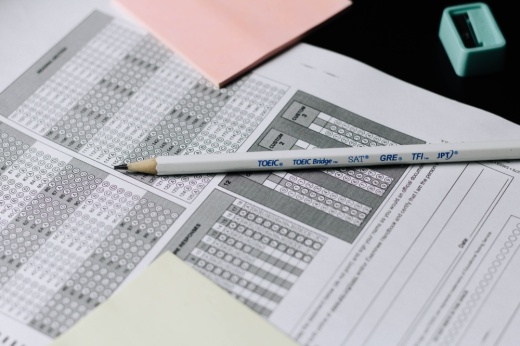“Texas measures student learning based on one test on one day,” council chair Kelli Moulton said at an Oct. 25 news conference. “This does not provide a full picture of an individual's achievement and growth, especially for our emergent bilingual students and students requiring special education services.”
Since October 2021, over 15,600 educators, parents, students and more from across Texas responded to a survey from the council. Just 1% of respondents said the STAAR was “an excellent measure” of a good school.
And according to a news release, 83% of Texans who took the 2022 Charles Butt Foundation poll believe that accountability should not be based entirely on STAAR scores. RYHT is funded by philanthropist Charles Butt.
The accountability system
Texas school districts and campuses are graded on an A-F scale based on three criteria: student achievement, school progress and closing the gaps. These ratings are typically released annually by the Texas Education Agency, but were paused in 2020 and 2021, due to the COVID-19 pandemic.
The TEA released its 2022 ratings in August.
Officials reported that 1,195 districts and 8,451 campuses were rated for the 2021-22 school year. Roughly 25% of districts and 33% of campuses improved upon their letter grades since 2019, according to a news release.
Student achievement
For elementary and middle schools, student achievement is based entirely on the STAAR, which is administered in the spring. Students in grades 3-8 are tested on math and reading. Fifth graders also take a science exam, while eighth graders are tested on science and social studies.
High school achievement is determined based on STAAR scores, graduation rates and how well schools prepare their students for college, a career or the military. High schoolers are tested on algebra, biology, U.S. history, English I and English II.
School progress
School progress is calculated based on academic growth and relative performance.
Academic growth measures how students improve on the STAAR over the years. Relative performance compares the performance of schools with similar poverty levels.
Closing the gaps
This measure also looks at achievement and growth, with an additional component for disadvantaged students, such as those learning English.
Proposed changes
The Measure What Matters council recommends an expansion of the assessment tools used to determine student success.
“The learning that happens in [classrooms is not] measured by the STAAR test,” said Kaylan Smith, RYHT’s regional advocacy director for Dallas County. “But it [is] crucial in helping students succeed in the years that follow.”
Texans who took the survey emphasized the need for “a more holistic measure of school quality,” including daily education and the various programs that schools offer, according to a report compiled by the council.
The report highlights possible accountability indicators, including attendance rates; teacher retention; health and wellness; the availability of fine arts, physical education and language courses; and the availability of extracurricular activities. The council recommends that the STAAR account for a maximum of 50% of school accountability.
Many of these indicators are already measured by schools and districts across the state, Moulton said.
Council members also propose an independent evaluation of the STAAR procedures to ensure the test encourages meaningful instruction and is valuable for all students— including special education students, emergent bilingual students and students of color.
The council will provide a set of legislative recommendations to the 88th Texas Legislature, which convenes in January. If state lawmakers approve some or all of the council’s proposals, the TEA will be required to create new policies in alignment with the changes, according to Bob Popinski, RYHT's senior director of policy.
View the full report and other resources from RYHT here.





